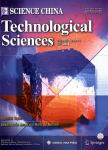A four-dimensional interaction-based appraisal approach towards the performance enhancement of a vehicular waste heat recovery system
A four-dimensional interaction-based appraisal approach towards the performance enhancement of a vehicular waste heat recovery system作者机构:Department of Thermal Science and Energy EngineeringUniversity of Science and Technology of ChinaHefei 230027China State Key Laboratory of EnginesTianjin UniversityTianjin 300072China
出 版 物:《Science China(Technological Sciences)》 (中国科学(技术科学英文版))
年 卷 期:2022年第65卷第12期
页 面:2921-2941页
核心收录:
学科分类:080702[工学-热能工程] 080703[工学-动力机械及工程] 08[工学] 0807[工学-动力工程及工程热物理]
基 金:supported by the National Natural Science Foundation of China (Grant No. 51906237) the Research Funds of the Double First-Class Initiative of University of Science and Technology of China (Grant No.YD2090002008) the Fundamental Research Funds for the Central Universities (Grant No. WK2090000032) the Youth Innovation Promotion Association of Chinese Academy of Sciences (Grant No. 2022463) the Research Center for Multi-Energy Complementation and Conversion。
主 题:waste heat recovery passenger vehicle in-vehicle scenario dual heat source operational flexibility
摘 要:The non-linear multifactorial impacts on fuel-saving potential constrain the practical performance of the vehicular waste heat recovery system(WHRS). This study proposed a four-dimensional interaction-based appraisal approach to interpreting these impacts for enhancing WHRS s in-vehicle performance. The interaction incorporates a heat exchanger, configuration, engine,and vehicle. The proposed approach comprises two successive steps, emphasizing evaluation under the rated(Step 1) and off-design(Step 2) heat source conditions. A case study of waste heat recovery from a passenger vehicle was conducted to evaluate the in-vehicle performance of a novel co-split system and two single-split ones(with/without a regenerator) through this approach. The novel system theoretically modifies vehicular performance but remains ambiguous concerning real-world behaviour, which is assessed and verified by the proposed approach. Two key factors determining vehicular performance were identified by Step 1, namely, net power output and engine backpressure. As the co-split system modified both factors, its fuel-saving potential could be increased by up to 20.3% compared with single-split systems. Also, the limiting factor for off-design performance was pinpointed by Step 2, namely, the mismatch between the heat source and working fluid, which led to the solution, i.e., the synergistic split regulation of the working fluid and heat source. An up to 8.8% improvement in net power output was achieved by the co-split system at off-design heat sources compared with fixed split ratios. Consequently, the approach enables holistic performance improvement of the vehicular WHRS under design/off-design heat source conditions.



